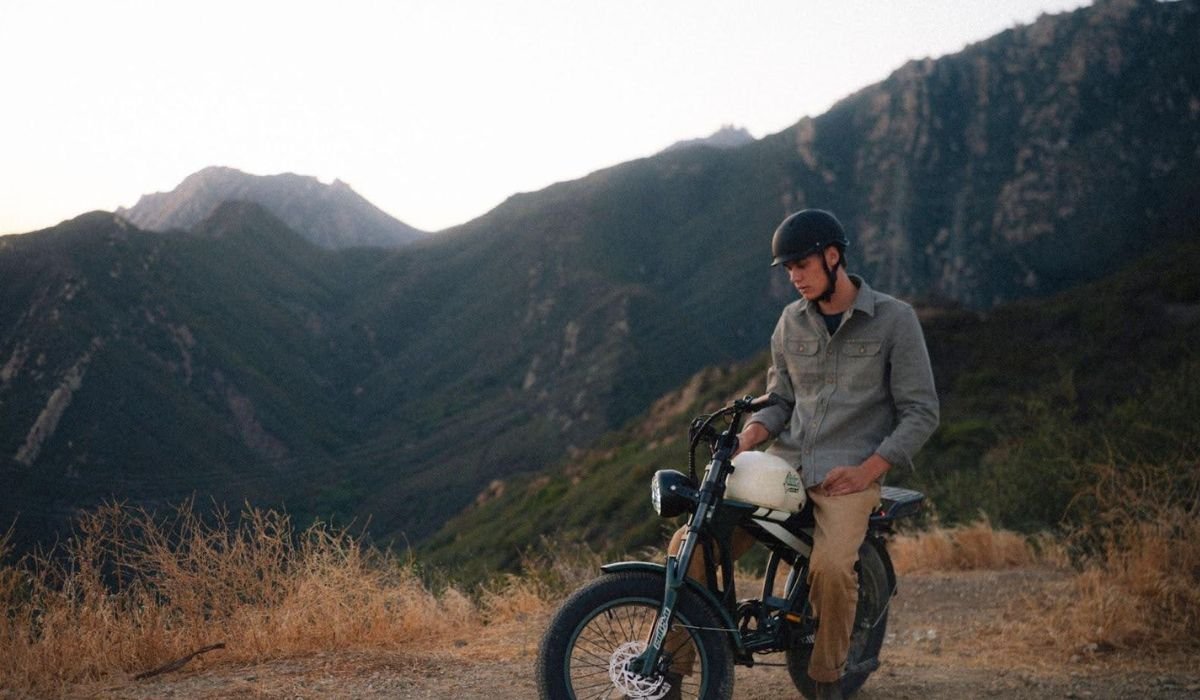Riding a Fat tire E-bike off-road is a blast—if you prep smart. Here’s the short version: dial in your setup, manage battery and heat, set tire pressure for the surface, and ride with smooth inputs. Most packs take 4–6 hours to charge, so plan your loop and range around that window to finish with power in reserve.
Fat tire E-bike setup that prevents trail failures
Before dirt, check bolts (stem, bars, brake mounts, axles) to spec. Spin wheels for rubs, squeeze levers for firm bite, confirm the chain is clean and shifting is crisp (or belt tension is correct). Set lever reach so you can brake comfortably when standing. A slightly higher bar and neutral-wrist lever angle improve control on rough ground. If your moped-style ebike has a long seat and fixed post, prioritize lever reach and body position—you’ll alternate seated cruising and short standing bursts to float obstacles.
Battery safety, charge time, and real range
The quick answer: 4–6 hours to full on a 2–3A charger. Only use the OEM charger; charge on a non-flammable surface; never leave a pack charging unattended overnight. Off-road range varies by capacity, terrain, and assist. As a reality check, 48V 15Ah (~720Wh) often yields 20–35 trail miles with pedaling; 52V 20Ah (~1,040Wh) can reach 30–50 miles in moderate terrain. Sand, snow, and steep climbs drain faster. Aim to finish with 20–30% remaining, and ease off if the pack or motor gets hot—drop assist, shift easier, and let temps stabilize.
Traction and tire pressure: the fat advantage (with limits)
Fat rubber floats and grips, but only if you run smart psi. Start here for 4.0″–4.8″ tires: hardpack/rock 12–15 psi for support and steering precision; sand/snow 6–10 psi for float without folding sidewalls. Lower pressure boosts traction but raises pinch and rim-strike risk. After adjusting, carve slow figure-eights—if the front feels squirmy (or tubeless “burps”), add a touch of air. Match tread to terrain; if your moped-style ebike came with street rubber, consider knobbier tires for real dirt.
READ ALSO: How to Sell Your Car in Melbourne: A Comprehensive Guide
Braking and speed control on heavier bikes
E-bikes carry more mass, so brake heat builds quickly. Use both brakes, bias slightly to the front, and feather rather than clamp. On longer descents, pulse to manage heat. Get into an athletic stance—hips back, heels down, elbows out. Enter corners slower than you think, then roll on assist at the exit for traction instead of sliding in hot. If your model has regen, test it on loose surfaces before trusting it on steep dirt.
Line choice and body movement
Look two to three bike lengths ahead; your hands follow your eyes. On rocks, connect the smoothest patches even if the line isn’t straight. Unweight the front wheel over square edges, then absorb with arms and legs as the rear rolls through. In sand, keep light hands and steady momentum; over-steering sinks the front. On roots, avoid braking mid-root; brake before, release over, and reapply after.
Off-road notes for a moped-style ebike
A moped-style ebike’s upright position and long seat are comfy and stable, but geometry and weight can blunt pedal leverage and slow stopping. Swap to off-road tires, and check that lights, racks, and fenders are tight—extra mass loves to rattle loose. Throttle can be fun on open fire roads; in techy bits, switch to PAS for smoother power ramps and better traction. Plan descents with extra room; heavier frames need more distance to slow down.
Quick pre-ride safety check (60 seconds)
- Tires: no cuts or bulges; psi set for today’s surface.
- Brakes: firm levers; rotors straight; pads not glazed.
- Drivetrain: clean/lubed chain or proper belt tension; smooth shifts.
- Axles/Headset: tight and play-free.
- Battery: seated, locked, and above 50% for unknown routes.
What to wear and what to carry
Start with a certified helmet, clear or tinted glasses for branches and dust, and gloves for grip and crash protection. Add knee and elbow pads on rocky trails. Pack a compact pump (not just CO₂), tire plugs or a fat-tube, a multi-tool, spare master link, zip ties, a small first-aid kit, and more water than you think you’ll need. If you ride solo, share live location and set a turn-back time based on battery percentage, not miles.
Advanced control: cadence, gears, and assist tuning
High cadence in easier gears keeps motors cool and gives finer traction control. Live in Eco/Trail modes; save Turbo/Boost for short climbs or sand patches. If your controller lets you tune, soften the initial power ramp so PAS doesn’t surge on technical terrain. Hub motors dislike low-rpm mashing—spin up to a safer cadence, then add power. Mid-drives reward downshifting before climbs to keep torque in a friendly range.
Wrap-up: simple rules that prevent complex problems
Safe off-road riding on a Fat tire E-bike boils down to a few habits: prep the bike, manage charge time and heat, set pressure for the surface, and ride eyes-up with smooth braking. Expect 4–6 hours to recharge and plan realistic range from your watt-hours, terrain, and assist—not brochure dreams. If you’re on a moped-style ebike, account for extra weight, swap to dirt-friendly tires, and keep power delivery predictable. Do these consistently and you’ll ride farther, safer, and happier—with a little juice left when you get back.
YOU MAY ALSO LIKE: Top ATV Shop in the UAE: Your Guide to Quality and Value

